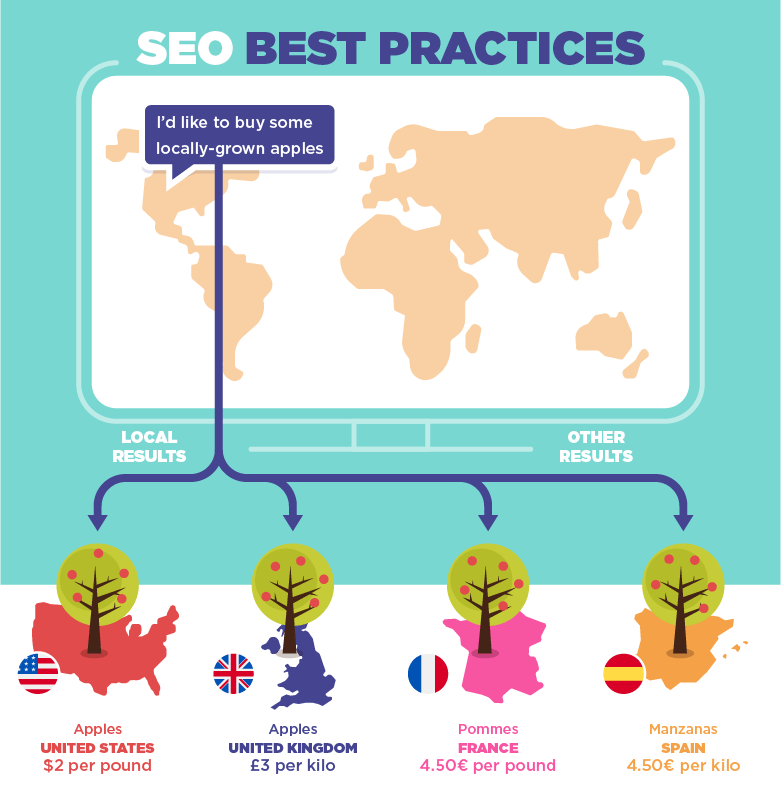


International SEO is a practice or, more precisely, a process. It means optimizing your site in a way that makes it easier for you to expand to international markets. This optimization will allow you to quickly identify which countries you want to target, as well as what languages should you add to your site.
Are you getting lots of visits from different parts of the world, well beyond your home country? If so, you might want to improve your visitors’ experience by customizing your website for them. Language-customizing not only includes changing the copy a little to suit your international audience better but, in some cases, even translating it into other languages.
International SEO is a larger-scale geotargeting. It means that, instead of focusing your SEO on attracting potential customers from the local market, you’ll adapt it to different countries and languages.
For an in-depth international SEO strategy, there are a few things you’ll need:
You start your internationalization strategy by employing particular URL structures for that purpose. You can go for a top-level country domain (ccTLD), a subdomain, a subfolder, a gTLD with language parameters or go for a personalized domain per country.
ccTLD
TechoPedia defines Country Code Top-Level Domains (ccTLD) as “a top-level domain name that is used to define the domain for a particular country or a geographical area.” These are often two-letter codes, like .uk for the United Kingdom or .ca for Canada.
Subdomain
A subdivision of a domain, it’s placed on a separate “third-level domain” that doesn’t necessarily have link equity with the base domain.
Subfolder
Here, the two-letter country code is in a root domain’s subfolder, separated by a slash (/).
gTLD with language parameters
When the root domain (ending in .com, .net, or .org) targets speakers of a specific language through a URL parameter.
Different domain
Having a different domain is simply creating a new root domain that specifies the target country or language.
You should consider each choice at length, as search engines take them into account in different ways. Below, you can see a little of what each of them entails:
Here you can see how different combinations of URL structures can internationalize a website, and how each is seen by search engines.
In any case, search engines recommend you organize each section of your site in a similar way, as that makes it easier for crawlers.
Language-Target Your Whole Website or Just Specific Pages
By using hreflang or language meta tags, you’re letting Google and other search engines know in which languages you’ll be adding content. In the example below, you’d be telling search engines that this content is also available in Spanish:
<link rel="alternate" href="http://yourwebsite.com/es" hreflang="es-es"/>
Other Smart International SEO Practices
The reason automated translators will never have enough nuance: adapting copy is much more than just translating the words. When you’re posting translated content, you need the text to say what you meant in the original post. That goes beyond idioms and right into a cultural approach to writing.
Besides merely using the language of the region you’re targeting, you need to “convert” content to its time zone, culture, currency, and even sense of humor. A good translator or a bilingual content writer will be a vital part of your international SEO. They can make the content seamlessly go from one language to the other. Ultimately, a well-adapted text will help Google show your site to the right people.
Thinking of targeting one specific country? ccTLD might be the best choice for you. Language targeting will need more than that, such as hreflang, subfolders, and subdomains, with or without ccTLD.
Bright Vessel offers international SEO solutions for your brand to reach its highest potential, anywhere you’d like it. Contact us about bringing your website to the international arena.

"*" indicates required fields

"*" indicates required fields

"*" indicates required fields
You must be logged in to post a comment.





